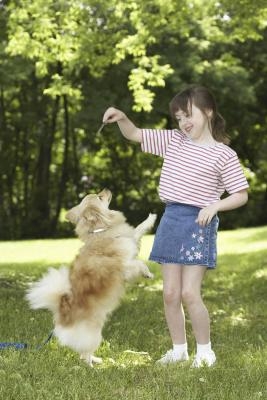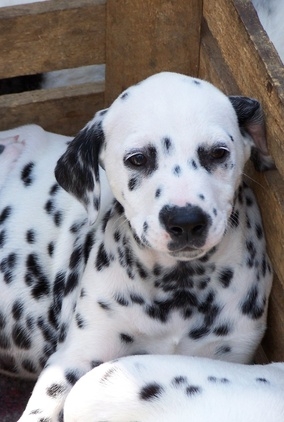House training your puppy (or grown dog) can be both frustrating and rewarding. The purpose of this article is to attempt to maximize the rewarding portion of the experience. There are several methods to accomplish this goal and I want to take a few minutes outlining the process and benefits of each.
Litter Box Training
Litter Box training your puppy is similar to litter training a kitten. Unfortunately, the kitten is much more naturally inclined towards this method. This method is not really practical for a grown dog or a large breed of puppy. Remember that you must have constant contact with your puppy to use this method of training. The litter box will replace the need to take the puppy outside, making it an ideal method to use if you have no yard.
A puppy litter box needs to be large and you might want to line the floor underneath incase of an accident. Keep the box on a hard-floor surface, preferably vinyl or ceramic if possible.
You can fill the box with cat litter and clean it the same way you would a cat litter box. Be sure to clean regularly as puppies typically generate a lot of waste.
Puppies will usually return to a place they have used before, so keeping a little bit of urine in the box will increase the likelihood of its use.
Paper Training
Paper training is similar to litter box training, but leaves you with a new consideration. Somehow, you must teach the puppy to eventually go outside. The ideal way to accomplish this is to be sure to set the paper near the door. This way your puppy will become accustomed to going to the door when he needs to potty.
With this method, you will need to take the puppy to the paper spot whenever you think it is time to potty. Be sure to praise your puppy when he uses the paper to potty. Good Boy and a pat on the head will reinforce your positive method.
As the puppy learns to use the paper, move it closer and closer to the door. Eventually you will move the paper outside. Once your puppy learns to go to the door to use the paper outside, you can remove the paper and have him just use the yard.
As with any potty training method, patience and positive reinforcement are important to teach your puppy in the shortest time possible.
Older Dogs
We've all heard the old adage You can't teach an old dog new tricks. Of course this is simply not true. I have house trained many older dogs that were once outside dogs. My daughter is an avid animal lover and seems to regularly volunteer my household as a dog rescue, so we have had our share of experience in this problem.
It's important to initially determine your dogs frequency of need to go outside. Most dogs will need to relieve themselves soon after eating, so be sure to take them out within a few minutes of finishing a meal.
An older do can be crate trained or command trained. If no one is with the dog for a good share of the day, the crate method is really the only option. Your dog will not soil the crate unless he absolutely cannot hold it. Please do everything possible to avoid putting him in this situation. Be sure he is taken out the crate regularly. He will soon learn the schedule and will not soil his crate.
With the command method, speak the same command each time you take your do outside. I am a believer in single word commands. Say Potty each time you go in the yard and praise your dog when he goes. He will soon learn why he is outside. It is best not to play with your dog outside until he learns why he is out.
If you dog has an accident, tell him no in a stern voice and take him immediately to the yard. Be sure to praise him each time he goes outside. He will soon learn where to go.
Regardless of the type or age of your dog and regardless of the method you use, always remember these general rules:
All dogs learn best by positive reinforcement. Your dog WANTS to please you. Be sure to praise him when he does and he will learn quickly.
NEVER hit your pet. He will never forget being mistreated and will quickly become hand shy or mean. Hitting your pet will teach him nothing other than mistrust of all humans.
Your Pet will learn quickly with a routine of consistency and positive reinforcement.
If you follow these general guidelines, your pet will learn quickly, and it will be a positive and rewarding experience for both of you.

 How to Train Jug Puppies
How to Train Jug Puppies
How to Train
How to Train Jug Puppies
How to Train Jug Puppies
How to Train
 How to Train Kittens to Use the Litter Box
How to Train Kittens to Use the Litter Box
How to Train Kittens to Use the Litter Box
How to Train Kittens to Use the Litter Box
 How to Train a 7-Month-Old Puppy
How to Train a 7-Month-Old Puppy
How t
How to Train a 7-Month-Old Puppy
How to Train a 7-Month-Old Puppy
How t
 Puppy Potty Training & Regression
Puppy Potty Training & Regression
Puppy Potty Training & Regression
Puppy Potty Training & Regression
 Puggle Training Tips
Puggle Training Tips
Puggle Training T
Puggle Training Tips
Puggle Training Tips
Puggle Training T